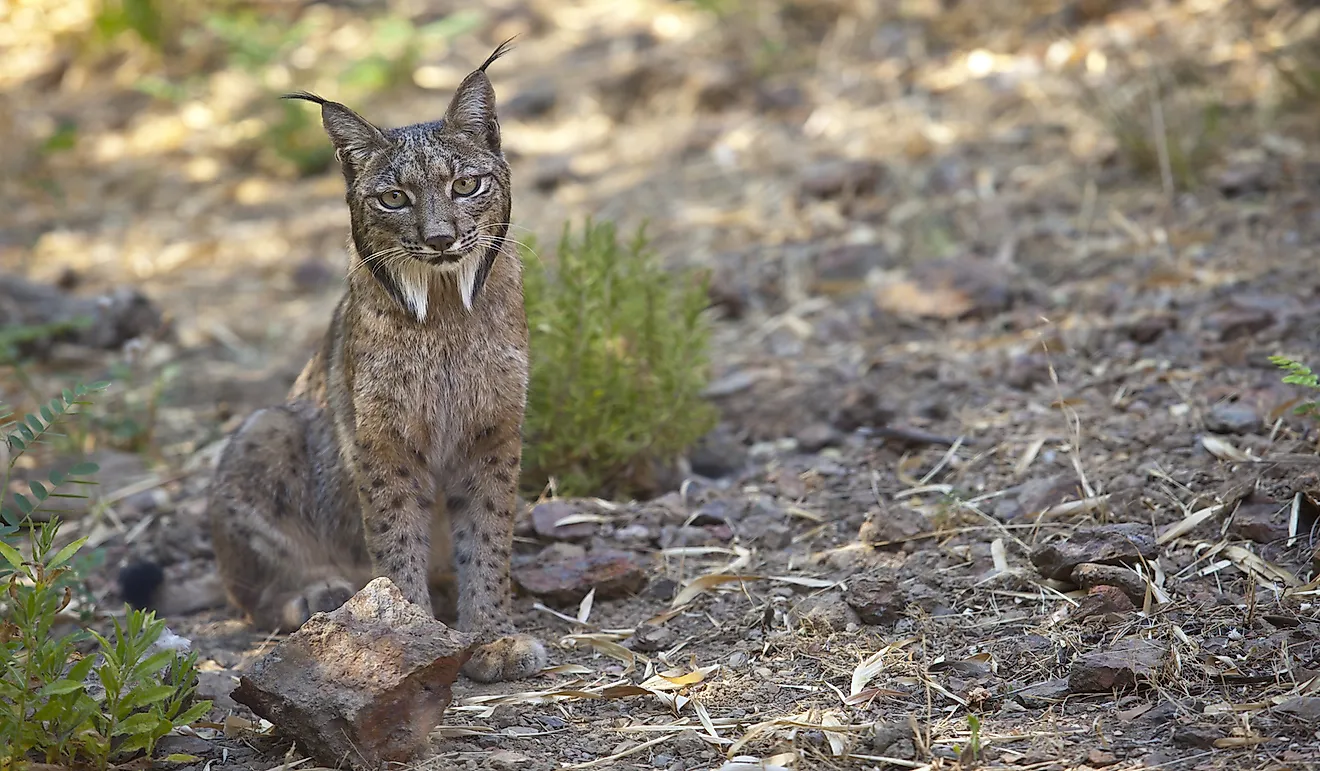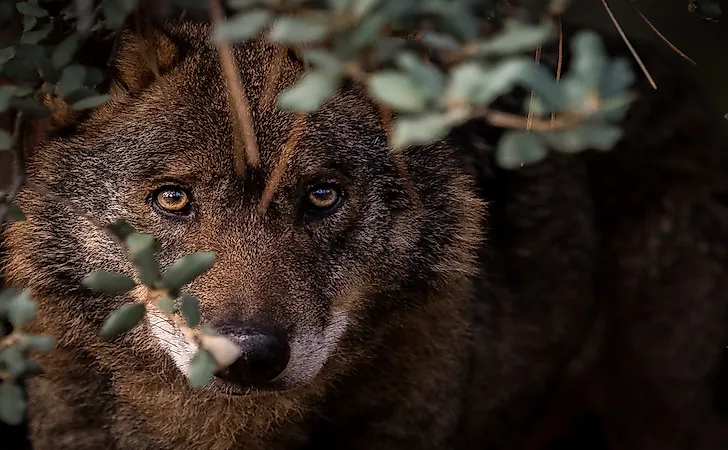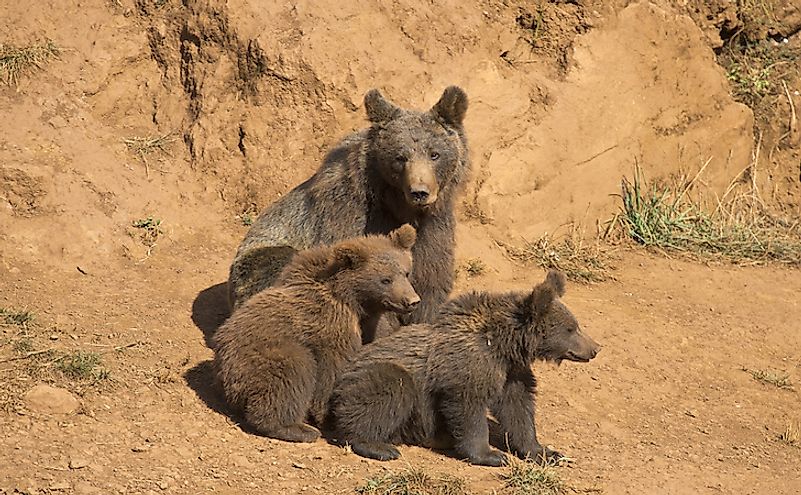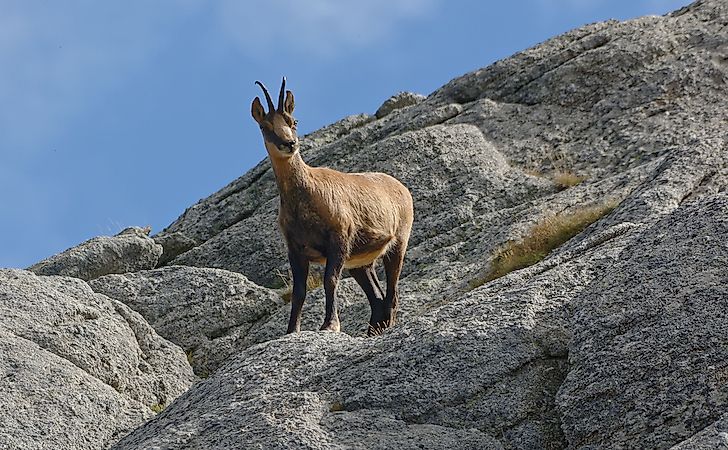10 Animals Found In Spain

Spain is a country situated at the crossroads of the Mediterranean Sea, Atlantic Ocean, Europe, and Africa. Its geography consists of ecosystems that include Mediterranean evergreen forests, deciduous forests, maquis and garrigue scrublands, coastal ecosystems, laurel, and high mountain forests, deserts, and wetlands. Consequently, the country has diverse wildlife that inhabits its various ecosystems. Spain is home to the most vertebrate animal species (570) and vascular plants (7,600) in Europe, and about 30% of species endemic to Europe live exclusively in Spain. The country is inhabited by rare animal species, which include the Iberian lynx, Eurasian brown bear, and the Iberian wolf.
Iberian Lynx
The Iberian lynx, scientifically known as Lynx pardinus, is a species of wild cat that is endemic to the Iberian Peninsula. The Iberian lynx live in maquis thicket and Mediterranean woodland. They prefer areas with a combination of dense thicket and pasture. The species prey on the European rabbit and supplements its diet with rodents and red-legged partridge. Iberian Lynx populations today are only found in limited areas of the southern part of Spain. However, this was not always the case. In the 1950s, the species roamed parts of northern Portugal, Galicia, central, and southern Spain. Between the early 1960s and 2000, the species lost nearly 80% of its former range. In 2002, there were fewer than 100 individuals left in the wild, and extinction seemed inevitable. Today Spain is home to a population of 686 individuals, and this was a result of intensive conservation efforts. The species is currently considered endangered by the International Union for Conservation of Nature (IUCN).
Iberian Wolf

The Iberian wolf, which is also referred to as the Spanish wolf, is scientifically named Canis lupus signatus. The Iberian wolf inhabits the northwestern part of the Iberian Peninsula, including the northwestern Spain and northern Portugal. Wild populations formerly existed across Europe in the 18th and 19th centuries, but by the end of World War II the species had been eradicated in most of Northern Europe and all of Central Europe. By the 1960s, isolated populations existed only in countries such as Spain and Portugal. The pack sizes have since recovered naturally. Iberian wolves inhabit forests, steppes, mountains, and plains, and in Spain populations can be found in Eastern Galicia, Western Galicia, Eastern Asturias, Western Asturias, and Central Asturias. Iberian wolf packs in the wild hunt boars, red deer, roe deer, rabbits, and ibexes, and also feed on sheep. The species is currently listed as "Vulnerable" (VU) on the IUCN Red List of Threatened Species.
Eurasian Beaver
The Eurasian beaver, which is scientifically named Castor fiber, is a species of beaver that inhabits Great Britain, Spain, Scandinavia, Central Europe, Mongolia, and China. Eurasian beavers are semi-aquatic animals that inhabit freshwater systems such as rivers, lakes, streams, and ponds. They prefer forested regions, but can also live in marshes and swamps. Eurasian beavers feed on woody vegetation, including birch, aspen, and willow trees. During summer, the animal also feeds on aquatic plants, roots, barks, leaves, twigs, and shoots. The Eurasian beaver is listed as a species of "Least Concern" (LC) on the IUCN Red List.
Spanish Ibex
The Spanish ibex, which is scientifically named Capra pyrenaica, is also known as the Iberian ibex. It is a species of ibex that has four subspecies, two of which are now extinct, while the two remaining subspecies are endemic to the Iberian Peninsula. The species live in rocky habitats and prefer cliffs with scrub, deciduous trees, or coniferous trees. The Spanish ibex feed on grasses, forbs, and acorns. It is listed as a species of "Least Concern" (LC) on the IUCN Red List.
Cantabrian Brown Bear

The Cantabrian brown bear, which is scientifically named Ursusarctosarctos and commonly known as the Iberian bear, is a population of Eurasian brown bear found in the Spanish Cantabrian Mountains. The Cantabrian brown bear’s diet consists of insects, wild ungulates, and livestock. Prime feeding areas include remnant deciduous forests and upland creek drainages. Iberian bears are currently listed as a species of "Least Concern" (LC) on the IUCN Red List.
Iberian Pig
The Iberian pig, which is scientifically named Susscrofa domesticus, is endemic to the Iberian Peninsula. The species currently lives in clustered herds in Spain, as well as southern and central parts of Portugal. Under traditional management, Iberian pigs inhabited sparse oak forests and ranged freely. The diet of the Iberian pig consists primarily of holm oak acorns, and the species produces highly commercialized ham due to its superior taste.
Pyrenean Chamois

The Pyrenean chamois, scientifically named Rupicapra pyrenaica, is a type of goat-antelope known in Spain as gamuza or rebeco. The species inhabits the Pyrenees, Apennine, and the Cantabrian Mountains. During summer, the Pyrenean chamois ascends the snowline, while in winter it descends to wooded regions. Its diet consists of flowers and herbs during summer, and grass, lichens, and shoots during winter. The Pyrenean chamois is listed as a species of "Least Concern" (LC) on the IUCN Red List.
Pilot Whale
Pilot whales are a species of whale also known as pothead whales or blackfish. They belong to the genus Globicephala, which consists of two species, namely the long-finned pilot whale, scientifically known as Globicephalamelas, and the short-finned pilot whale, scientifically known as Globicephala macrorhynchus. It is difficult to distinguish between the two species, and both can be found in all oceans, except the Arctic Ocean. Short-finned pilot whales live in tropical and subtropical waters, while long-finned pilot whales prefer relatively colder waters. Both species feed primarily on squid, cod, and turbot. Given a lack of sufficient information required for accurate assessment, pilot whales are listed as "Data Deficient" (DD) on the IUCN Red List.
Common Genet
The common genet, which is scientifically named Genetta genetta, is a medium-sized mammal that is native to Africa but has since been introduced to the Balearic Islands and Southwestern Europe. In Europe, the species inhabits the Iberian Peninsula and Italy. The species thrives in pine and oak forests, shrublands, olive groves, riparian zones, and rocky areas. The common genet is listed as a species of "Least Concern" (LC) on the IUCN Red List.
European Mink
The European mink, which is scientifically named Mustelalutreola and commonly known as the Eurasian mink, is a semiaquatic mammal that is native to Europe. The species inhabits parts of western France, northern Spain, and Eastern Europe. The species lives primarily near forest streams that are unlikely to freeze during winter, and its diet consists of voles, fish, insects, frogs, and crustaceans. The European mink is listed as "Critically Endangered" (CR) on the IUCN Red List.
Wildlife Conservation In Spain
According to the International Union for Conservation of Nature (IUCN), 227 species of animals in the Iberian Peninsula and surrounding waters are in danger of extinction. The main threats facing wildlife in Spain include habitat loss and pollution. Spain has currently designated a significant portion of its territory as nature reserves to preserve local wildlife. As a result, about 27% of the nation’s terrestrial areas are protected wildlife areas. This percentage is considerably higher than the 17% target agreed upon by the Convention on Biological Diversity (CBD). Additionally, about 8% of Spain’s marine areas are also protected, which is in line with the goal set by the CBD.











